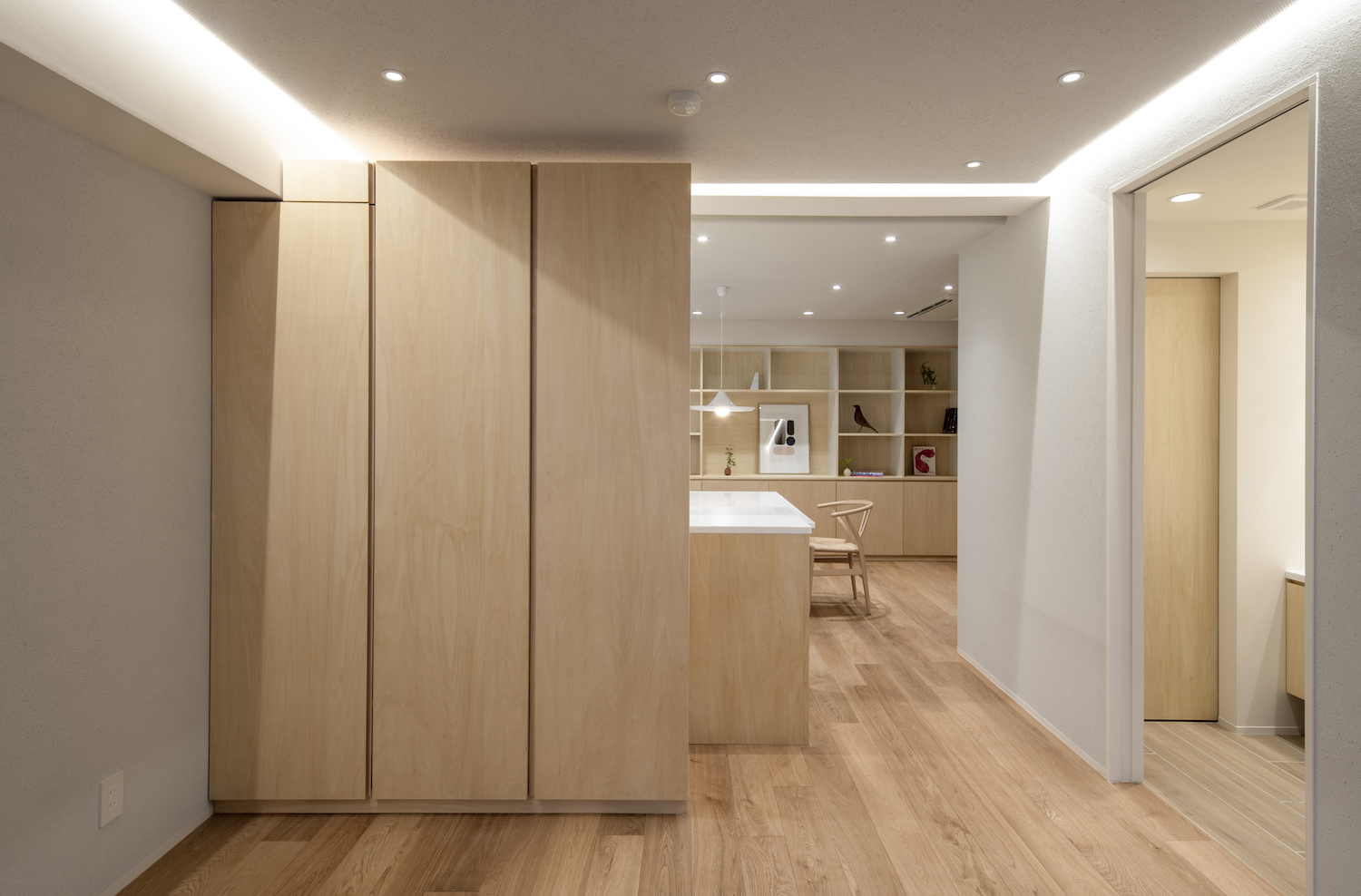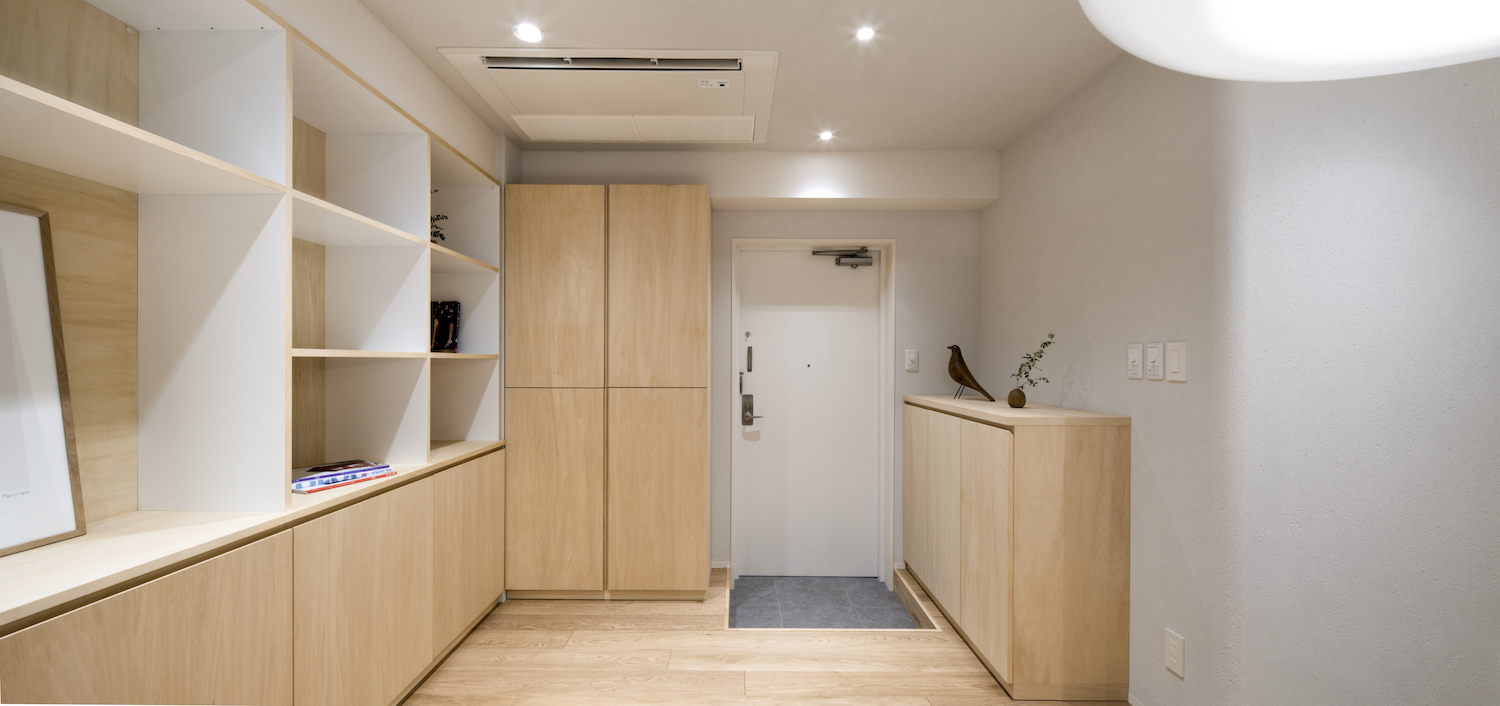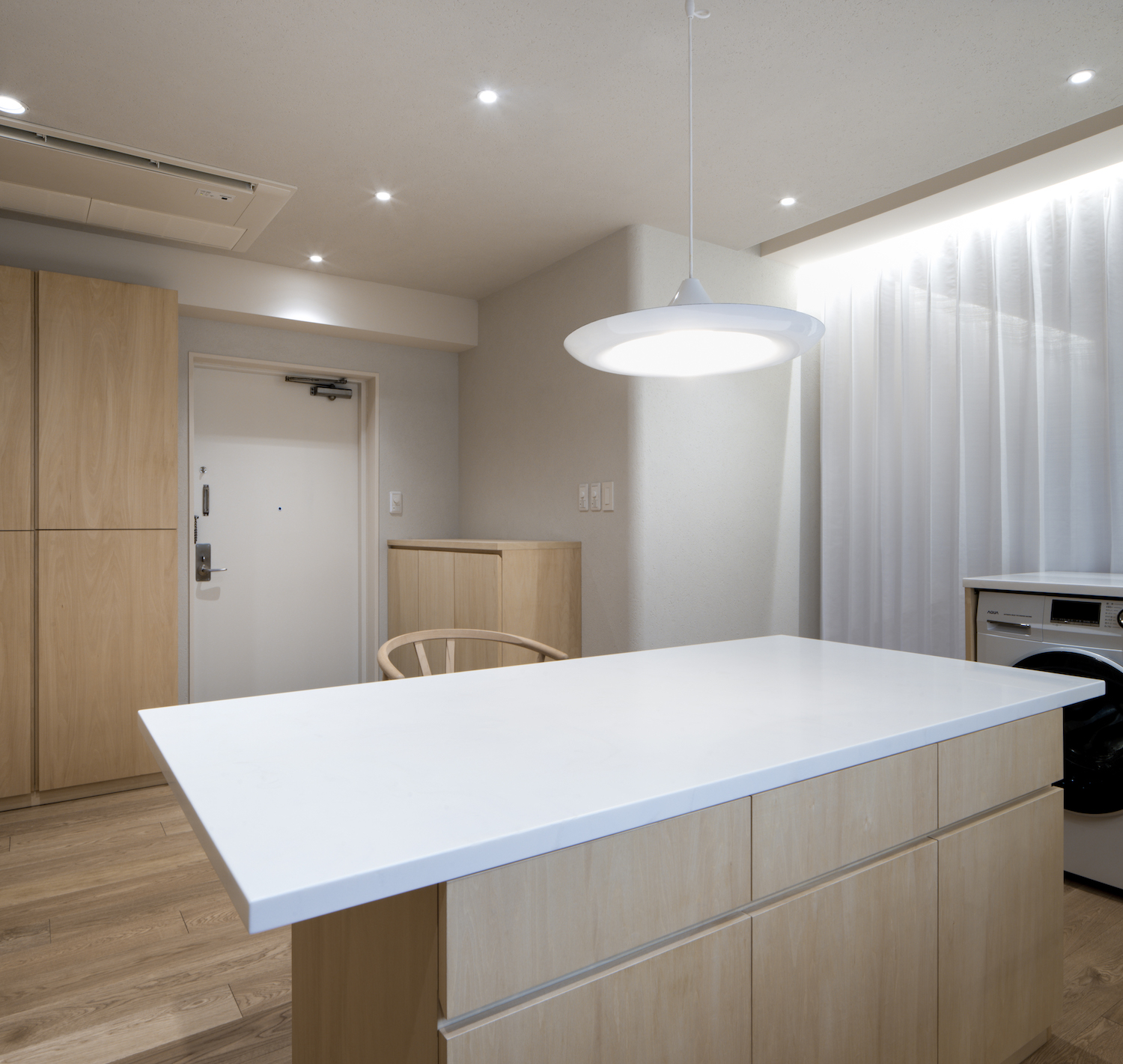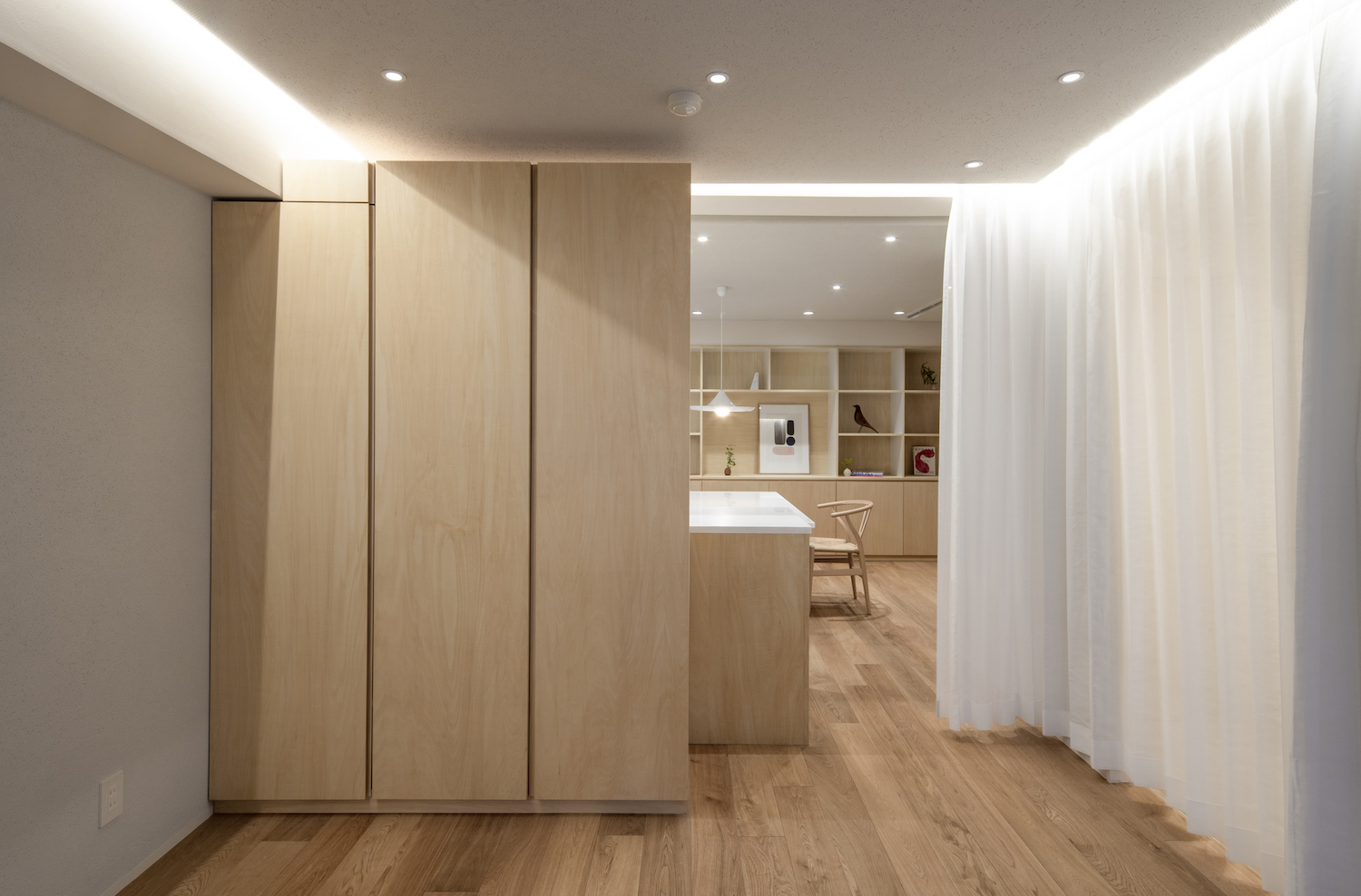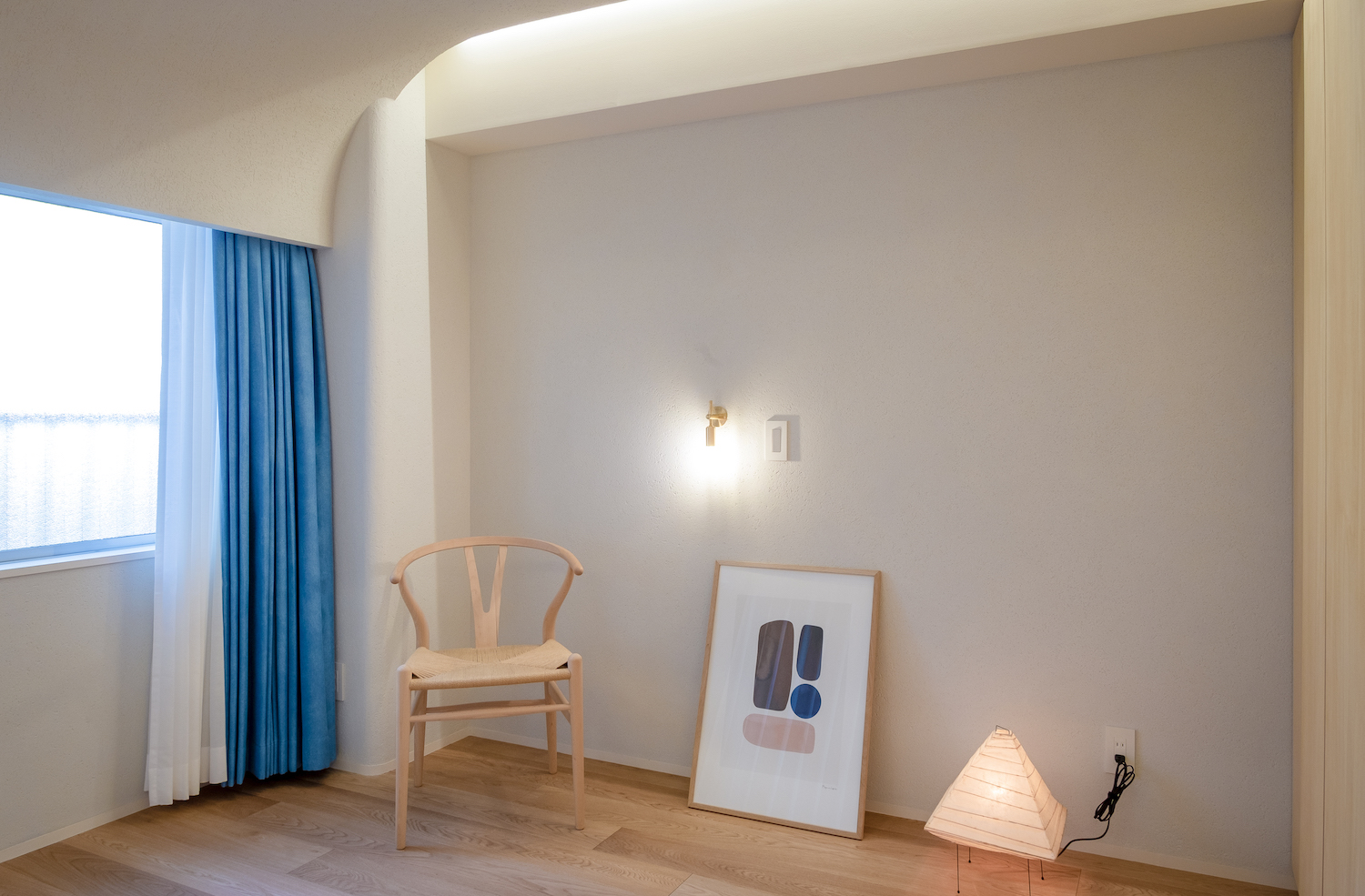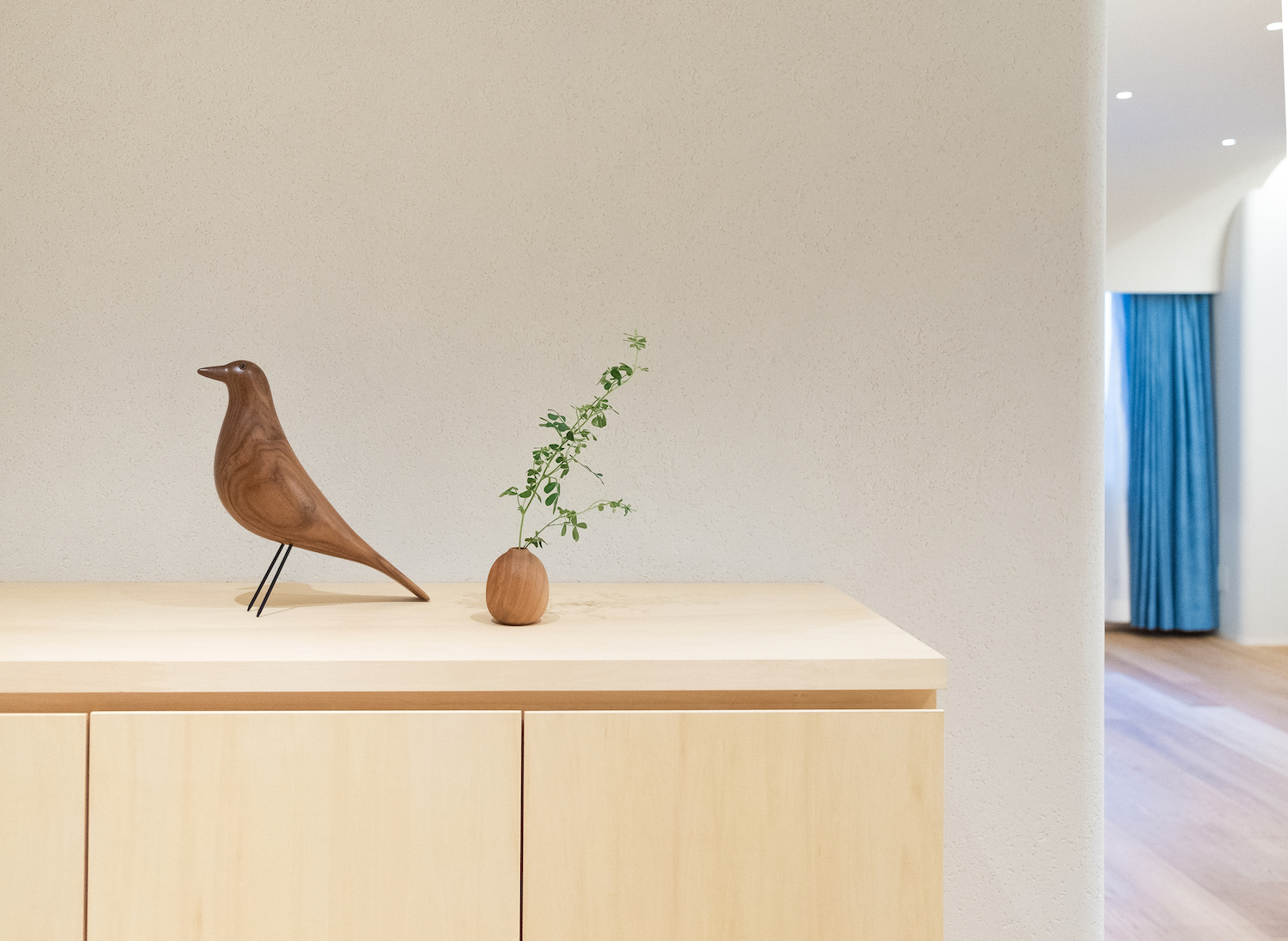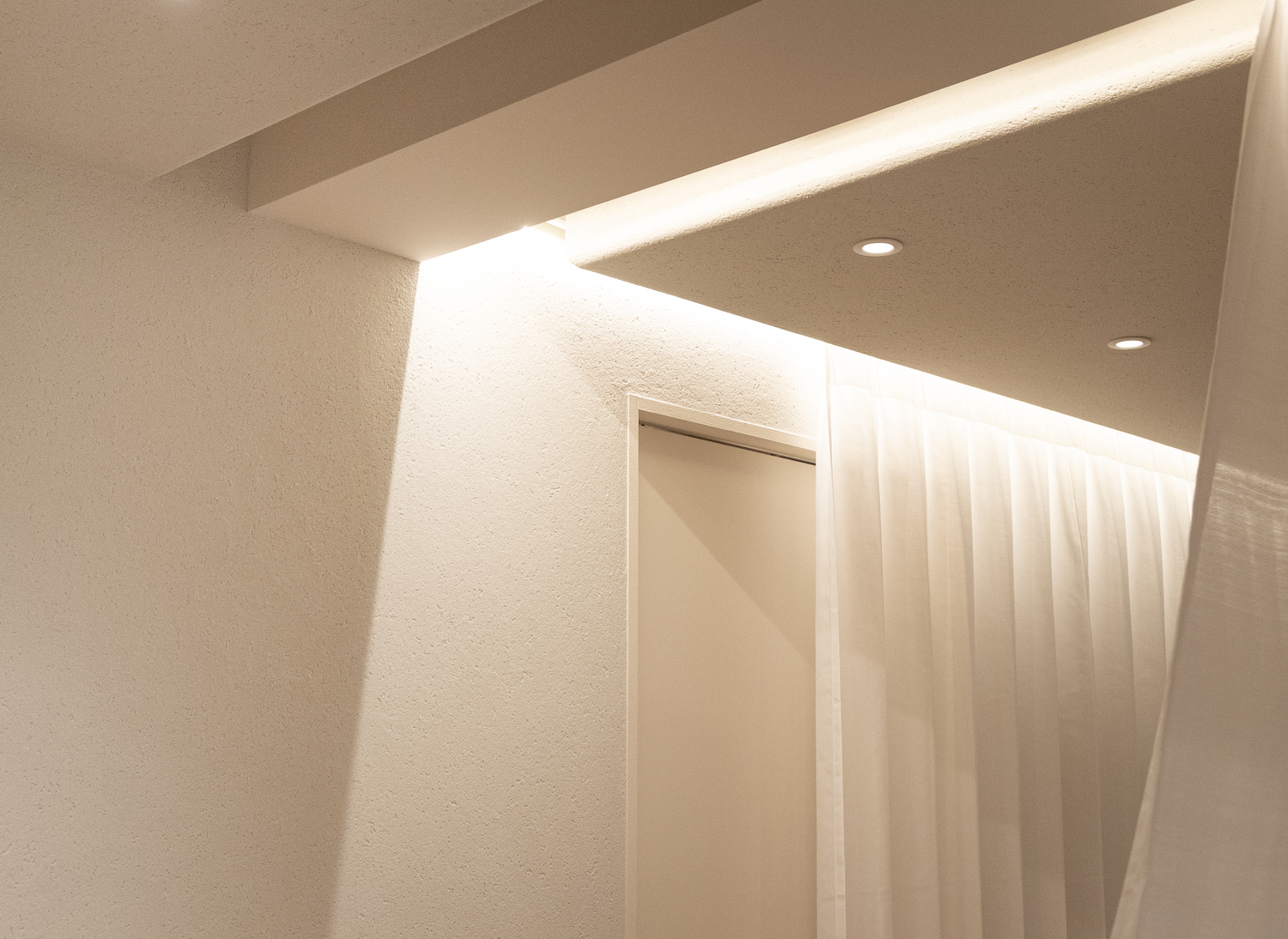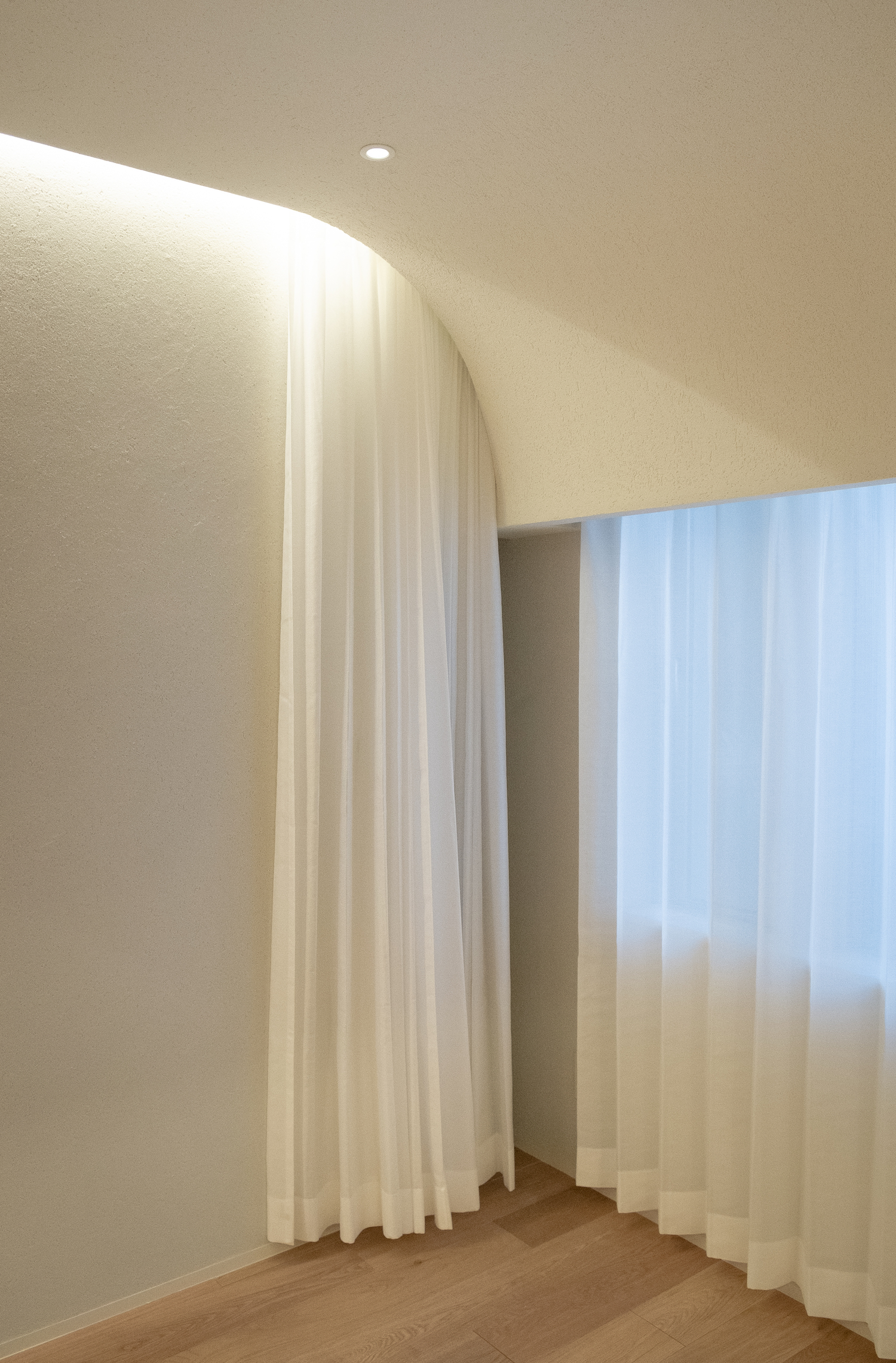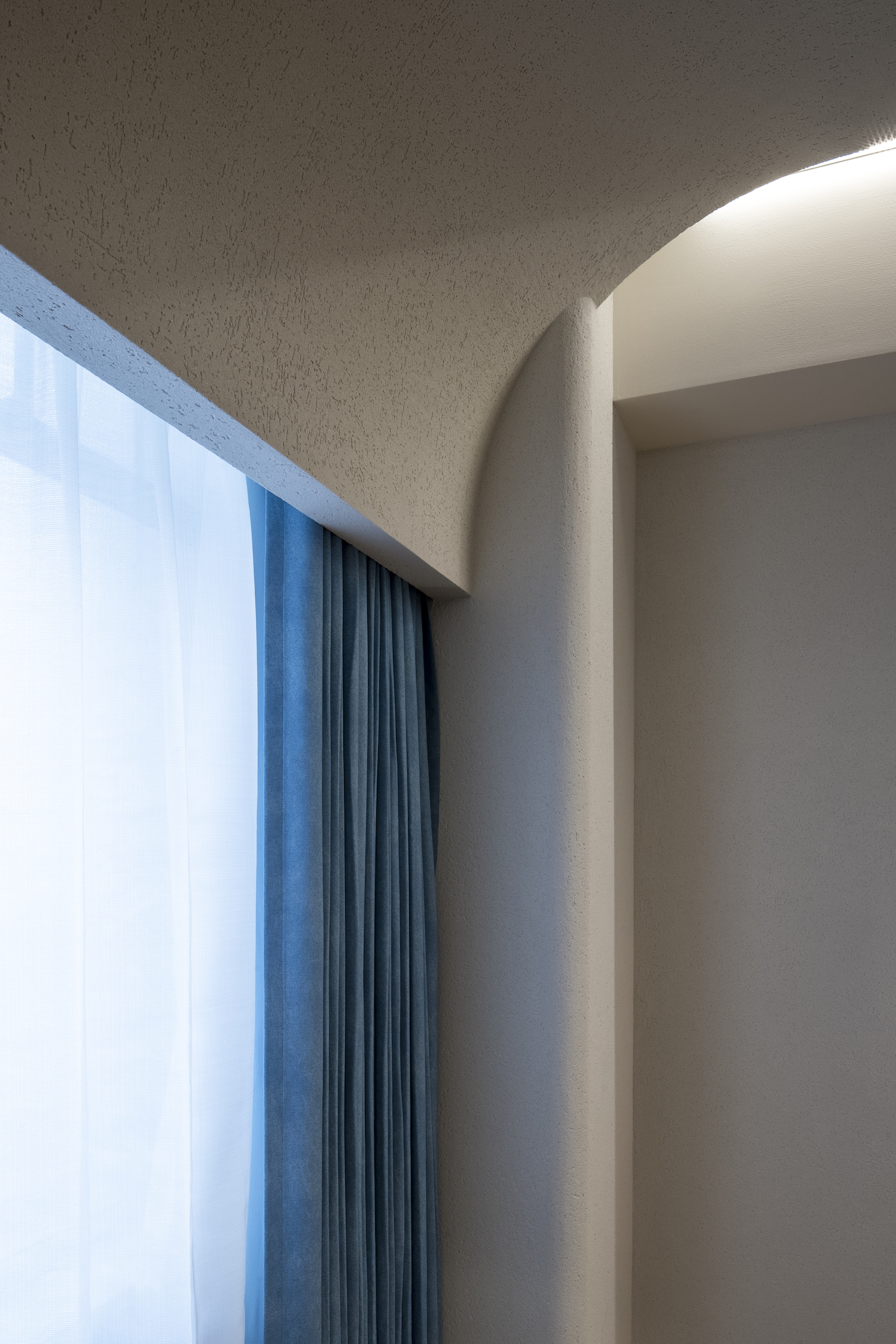S Apartment 602 is a minimal apartment located in Tokyo, Japan, designed by Haruki Oku Design. This is a project to convert a room in the 45 year – old, 8 – story office building near Shimbashi Station in Tokyo into a living space. The client is the building owner, and the residents are the owner’s son and his wife in their 20s. Observing the skeleton, the studio felt that the existing beam, located right in the center of the plane, gently divides the space. First, the living space and bed space were zoned based on this existing beam. Next, a gently curved ceiling was installed across the entire plane to adjust the edges of the existing frame. The ceiling was intentionally offset from the frame to create an appropriate margin between the ceiling and the frame. These margins are arranged in a “L” around each space, with indirect lighting, curtains, and air conditioning embedded in them. No extra noise is generated in the ceiling, and the connected ceiling with a sense of depth creates a space with a sense of unity.
The built – in furniture was newly designed as a freestanding individuality, without being identified with the architectural space. The project targets a room on the sixth floor, and the seventh and eight floors will also be renovated into the owner’s residence in the future. It is envisioned that the couple will rotate residences within the same building as the family grows, such as the birth of a child. It can accommodate the possibility of future occupancy by people other than the current occupants as rental housing. In addition, the bed space and living space are vaguely separated by built – in furniture and curtains so as not to disturb the depth of the one – room space. The built-in furniture is not made t o the height of the ceiling, and the light flowing in from the top suggests the depth of the space.
The ceilings and walls are made of plaster derived from natural materials, the floors are solid oak flooring, the built – in furniture is made of linden wood, and all paints are also derived from natural materials. The particle size and composition of the plastering aggregate are determined by studying the ceiling and walls to ensure that they absorb and reflect light appropriately. The col or palette was controlled so that the ceiling and walls are seamlessly connected, with a gradational change in brightness for the ceiling areas and a lowered brightness white base for the walls. The interior elements are based on the use of natural materials and a neutral space that exudes the colors of the residents’ lives, based on a color palette of earth tones and calmness.
Photography by Kenji Seo
